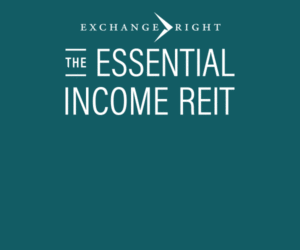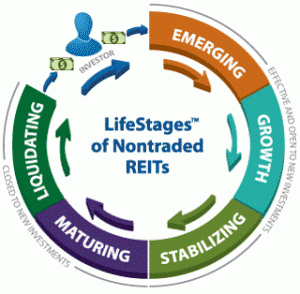NexPoint’s Single Family Rental Strategy
November 9, 2020 | James Sprow | Blue Vault
 Blue Vault recently spoke with Brian Mitts at NexPoint about the sponsor’s views on the single family rental sector.
Blue Vault recently spoke with Brian Mitts at NexPoint about the sponsor’s views on the single family rental sector.
Brian is the Chief Financial Officer at NexPoint’s real estate platform, NexPoint Real Estate Advisors, which he co-founded in 2012. Today, they have approximately $8 billion in gross real estate investments across the platform, spanning multiple sectors and different parts of the capital stack. NexPoint focuses on finding unique opportunities that have a good investment story and a long-term thesis. NexPoint initially focused primarily on multifamily investments. Over the past several years, NexPoint has begun to expand their involvement in other real estate sectors, such as single family rentals, self-storage, hospitality, and office. With nearly $2 billion invested in single family assets, NexPoint and its affiliates have emerged as leaders in the single family rental space. They are not looking to chase yields or volume. They stick to what they know and where they know it.
As a company, NexPoint believes they are well-positioned in this COVID environment. NexPoint has consistently focused on workforce housing, which management believes is a resilient asset class, even in economic downturns.
Blue Vault began the interview by asking: “What asset groups do you see as being recession resilient right now?”
Brian Mitts replied, “I would say single family rental, multifamily, storage, industrial, and not necessarily in that order. Some of those are more depend on geographic location. Especially multifamily, if you are in coastal or in super high-end product, in our view, that is not going to perform as well during a recession and hasn’t so far during this downturn. With storage, you want to be in areas that have job growth and growing population, which tends to be in the Sun Belt right now and not on the coasts. In housing, single family housing in particular is a little more resilient across the board. Some millennials are not able to afford to buy a house, so that is why we are seeing a pick-up in single family rentals. We think those four sectors are very resilient and will do well, especially the single family rentals. We expect the single family rental sector to do well during COVID and beyond.”
Blue Vault asked, “How do you invest in single family rentals? Do you purchase a portfolio that is already professionally managed?”
Mitts replied, “About two years ago, we bought an existing platform that had a little over 4,000 homes. They had been in business for about ten years and had spent a lot of time perfecting their operations and their processes. We buy houses one of three ways: single home purchases, smaller portfolios within a city, maybe 50 to 100 homes owned by mom and pop operators, and thirdly, larger competitors that have larger portfolios that for whatever reason, they have to sell or want to sell. It’s always more efficient to buy larger portfolios. The second or third bucket tend to be houses that are currently rentals. You really need scale in order to build a successful company. Today, our platform has 9,000 homes in twelve markets.”
Blue Vault asked, “Do you foresee a movement from the urban areas to the suburban areas? What are the big demographic trends that are driving single family rentals as an attractive asset class?”
Mitts said: “I think what’s driving single family rentals is you have a large cohort that has deferred a lot of life decisions and maybe isn’t well-positioned to purchase a house, can’t qualify for a mortgage, or just want more flexibility without the responsibility of maintenance. We have seen a pretty major shift from ownership to rentership, which I think was born out of the last crisis. We had pushed ownership up to unsustainable rates and since then, it has fallen back to more historic norms. People still want a house, which has a lot of benefits over an apartment. You’re seeing demand for rental homes, rather than apartments, and that is going to continue to be the case. We focus on renters-by-necessity, meaning they really don’t have an option to own and they really have to rent.”
“Another trend is the migration out of the high taxed, high cost of living states and into the Sun Belt where you have lower taxes, good business climates, and lower cost of living. I think COVID really accelerated what had already started to happen. There is also migration from the urban cores to less populated areas. Multifamily living is also not great for social distancing.”
On the supply side, it looks like the housing starts may not be able to meet the demand. Blue Vault asked, “Is some of the appreciation in single family houses driven by the supply constraints?“
Mitts answered, “There is definitely a supply constraint right now. Only about 10% of new homes being built are under $200,000, which is what the renter demographic would be able to afford to buy. Also, only 24% of homes built in 2019 were less than 1,800 square feet, also what the renter demographic would choose as a starter home. There is also a tremendous shortage of workforce housing There are developers that are building entire communities that are designed specifically to rent. That will obviously catch up at some point, but we don’t focus on that category. What we are focusing on is the 1960’s to 1970’s build that is still available at good prices. You are seeing higher demand at the higher price points, say $200,000 to $250,000 or above, versus the $100,000 to $125,000 thousand or below range. There’s a ton of older product out there that is available at good prices, and you don’t see people driving up those prices, which gives us a good opportunity to buy assets without a lot of competition and turn them into rental properties.”
Blue Vault followed up: ”Who are your tenants? Have they been affected by COVID-related job loss?”
Mitt replied, “Our average tenant’s household income is around $70,000 per year. A common misconception we often hear is that our residents will be largely unemployed due to the current environment. There’s less COVID impact than you might think. Our collection numbers show there’s less impact than the headlines suggest. A lot goes into our tenant underwriting to ensure our residents will be able to afford to pay their rent. Many of our tenants qualify at a 5:1 income to rent ratio. That is very sustainable.”

We asked, “Have you seen a dip and then a recovery in collections or has it been pretty steady over the last few months?”
Mitts answered, “We’ve actually seen an increase over historical collections. We have been impacted by the inability to charge late fees and evict non-paying tenants, but other than that, operations are the same – if not better – than before COVID. We’ve gotten our bad debt down to a very low level. Our public peers American Homes for Rent (NYSE:AMH) and Invitation Homes (NYSE: INVH) have also announced successful collection efforts through COVID, as well as high occupancy. Single family rentals have generally performed well during the downturn and we continue to believe that will be the case.”
Blue Vault asked, “How are your occupancies doing?”
According to Mitts, “Our occupancy on the stabilized units has been about 98% to 100% occupancy. Our retention has also been very good. As soon as we have someone move out, we have another tenant ready to move in. When we first buy a house, we’re doing rehab on it. That’s a big part of our business. As we build more scale, we get more control, and we get better response from the contractors that do our rehab and receive a better quality work product.”
Blue Vault wanted to know, “As you gain scale are you able to get better, more reliable contractors?”
Mitts replied, “Yes, we find someone good and reliable and give them a ton of work. We try to achieve scale in one market, rather than be too geographically diversified. What we’ve seen with other single family rental operators is they try to diversify across markets, but they don’t have scale within a specific market. We try to get instantaneous scale.”
Following up, “What do you think the minimum number of houses in a market is to achieve the scale you want? How would you define achieving sufficient scale?”
Mitts answered, “Ideally, you begin with at least 50 houses, depending on the market and the geographic dispersion within the market, with a path to get to 150 to 200 within a few months. Anything less than that is probably not worth it. When you get to 250 to 500, then you have real scale. We’re looking at secondary and tertiary markets, where it doesn’t take you two hours to drive across the city in heavy traffic.”
Blue Vault asked, “If you have 50 to 100 homes in a market and you want to build that up, are you building it up one at a time or are you looking at a mom and pop who want to get out?”
Mitts replied, “We do both. From our perspective, it’s a buyer’s market. Typically, what you see is a house where it is difficult to get a mortgage. Not many people want to deal with a mortgage on a $100,000 house. It’s hard for someone to come up with a down payment and the investments to bring it up to a better living standard. We don’t buy a house with debt. We put out a bid, we’re going to pay cash and close it today. The owner of that house is not looking at the cash flow the house can generate but what the other houses around it are selling for.”
We wanted to know, “Can you discuss the markets you are investing in and contrast them with the coastal markets?”
Mitts replied, “Our secondary and tertiary markets in the Midwest and Southeast have a variety of benefits. One is affordability. Two is the business climate. There aren’t a lot of restrictions on landlords versus tenants like some of the other markets. The general cost of living in our markets is far cheaper. Another thing is you won’t see those big swings in housing values. They are more stable. They aren’t as hot or cold as in other markets, where the bottom falls out.”
“The other thing is that people are naturally conditioned to think that you buy it and then the price goes up and you sell it. What we focus on is not the value of the property, but the cash flow it produces. We’re trying to maximize that cash flow, regardless of what happens to cap rates. Our focus is trying to generate the cash flow and the NOI and get the margins as high as we can. And with the 5 and 10-year rates cratering, there is quite a margin right now. We’re in a favorable cap rate environment right now.”
Blue Vault asked, “Are there many listed REITs in the space currently?”
Brian Mitts replied, “There are only two publicly traded companies that are focused on single family rental that are performing well. There are some large institutional investors that like the sector, but they don’t have any way to add exposure to the sector. There is a supply issue from an investor perspective.”
Blue Vault: “Thank you, Brian.”











